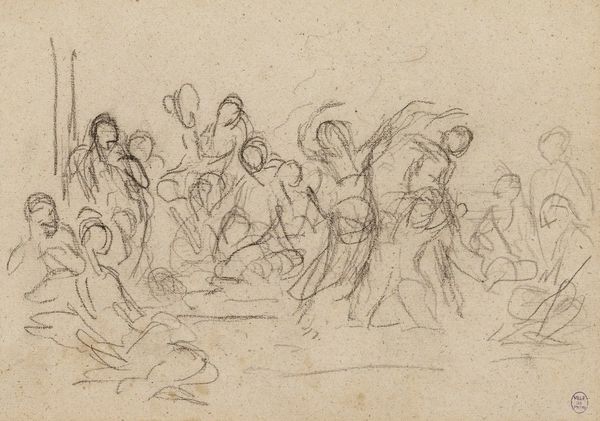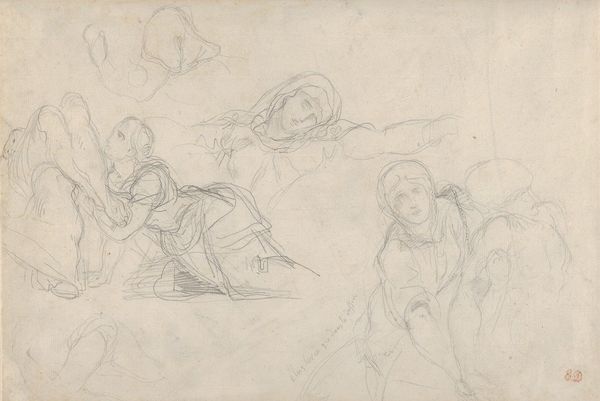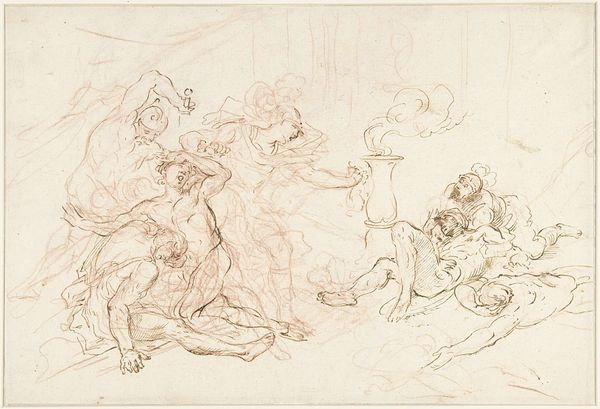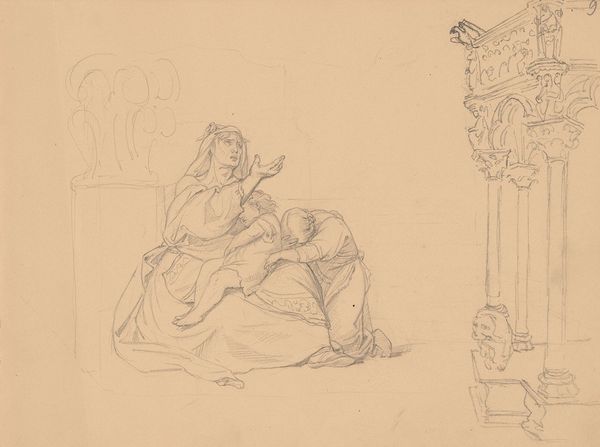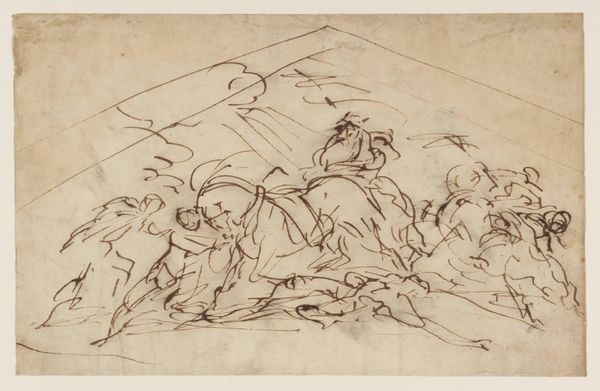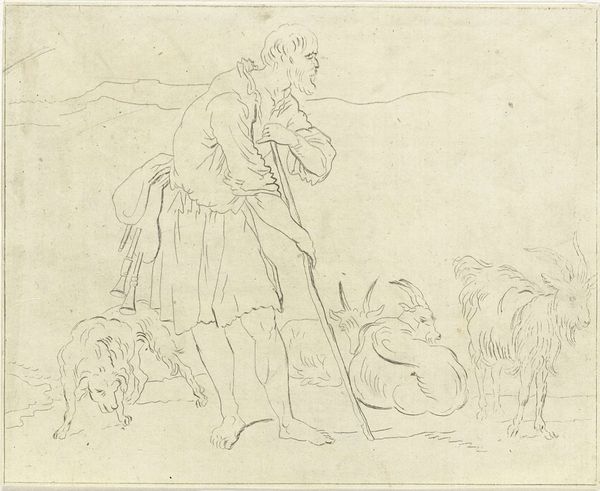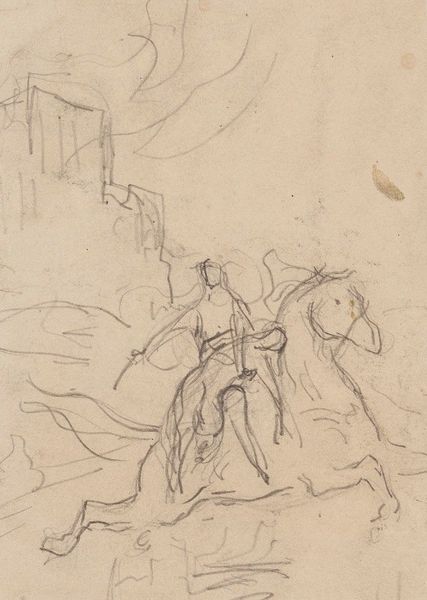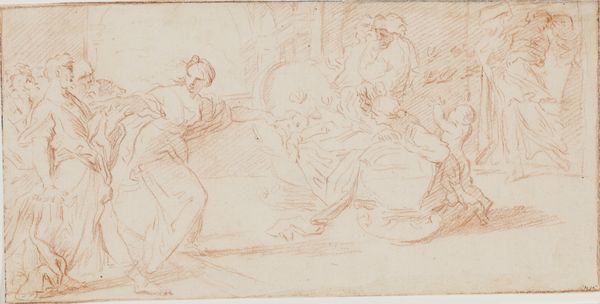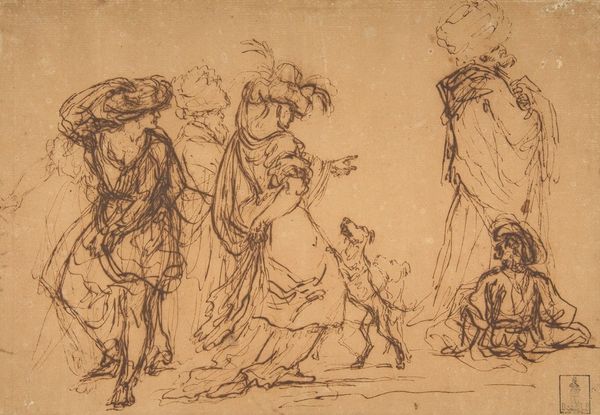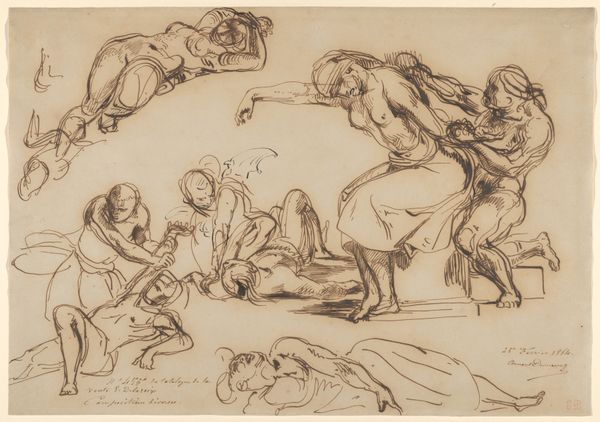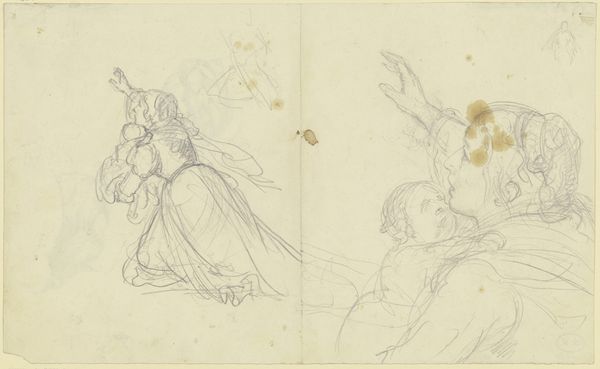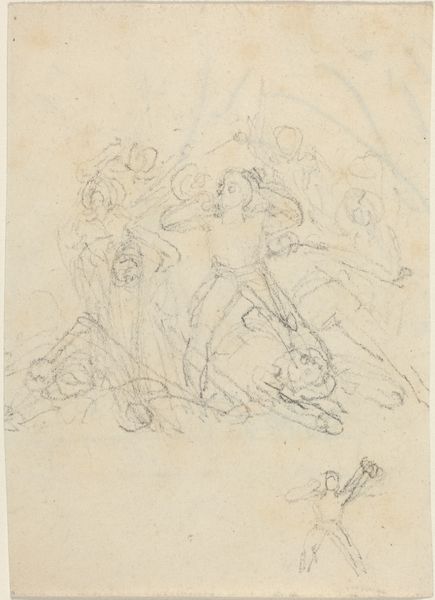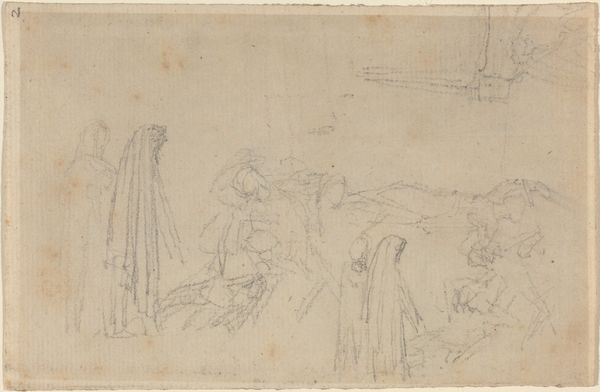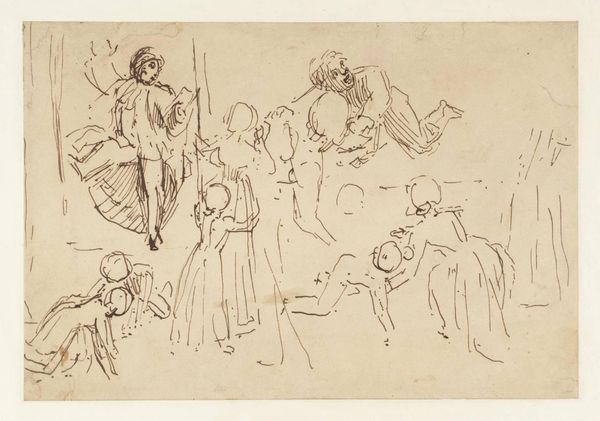
drawing, pencil
#
drawing
#
figuration
#
romanticism
#
pencil
#
history-painting
Copyright: Public Domain: Artvee
Théodore Géricault made this sketch, Fallen Soldiers, with graphite on paper in France sometime in the early 1800s. It anticipates his large-scale paintings depicting modern events. Here, the subject is anonymous casualties of war. Géricault presents a raw, unidealized view of its human cost. The sketch hints at the social conditions shaping artistic production in post-revolutionary France. The rise and fall of Napoleon, along with the restoration of the monarchy, created political instability, and artists began to question traditional heroic narratives. To understand this sketch, historians consider the institutional history of military power and its representation in art. How do we usually see soldiers depicted? How does Géricault challenge those conventions? We can better understand the artist's intentions by researching the military campaigns of the period and the cultural attitudes towards war and patriotism reflected in popular media. The meaning of this art is contingent on its social and institutional context.
Comments
No comments
Be the first to comment and join the conversation on the ultimate creative platform.
